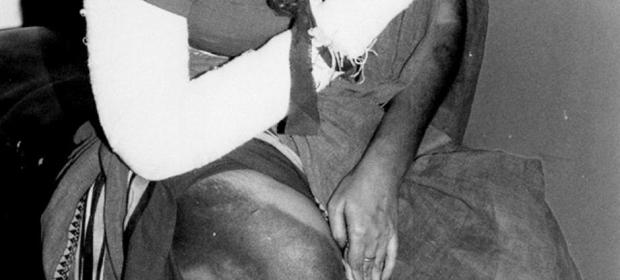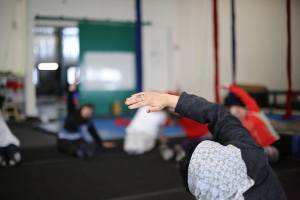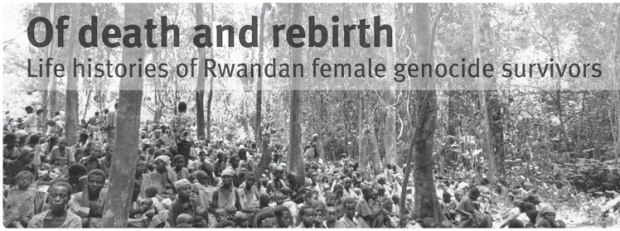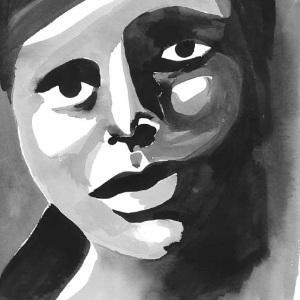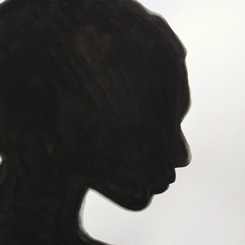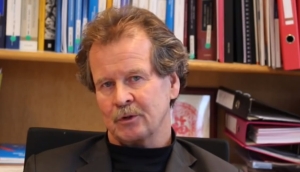Posts Tagged trauma
Torture knocking on Denmark’s door
Posted by World Without Torture in Rehabilitation, Voices on 21/01/2015
Recently, the IRCT and two of its Danish member centres spoke with Copenhagen-based monthly newspaper The Murmur about their work with torture victims in Denmark.
Torture is something that most of us assume only affects those in developing nations, where civil wars still rage, governments are heavily corrupt and poverty plagues the masses. But while it is more prevalent in these nations, Amnesty International found evidence of torture in 79 countries, all of which had ratified the UN Convention Against Torture.
The IRCT is a leading organisation that helps rehabilitate these individuals, with 144 rehabilitation centres providing holistic treatment to torture victims in 76 countries.
Asylum seekers arriving in Denmark often bring with them scars from their encounters with torturers. In Copenhagen, the Oasis rehabilitation centre has just 15 staff members tending to approximately 130 victims, mostly hailing from Afghanistan, Iraq, Palestine and Somalia. Its sister organisation, Rehabiliteringscenter for Torturofre (RCT) in Jutland, treats many people from the Balkans, Chechnya, Syria, and the Post-Soviet Republics.
Both organisations treat the victims using a range of services and personnel, including social workers, psychologists, physical therapists and psychiatrists.
“We treat many civilians who have been victims of, or have witnessed organised violence against others, either during armed conflicts or under terror regimes, but we also treat perpetrators, as many from the Balkans were forced into military service against their will,” explains Mikkel Auning-Hansen, an RCT psychologist.
“Chechen refugees are damaged in many ways. Some were hunted, interrogated or tortured by paramilitary groups. Most of them have family members missing, hiding away from home or hunted for their political views. Some still feel that they are being hunted in Denmark.”
Ruth Lauge, the Director of Oasis, says soldiers are often the perpetrators. “We’ve treated a number of people who were kidnapped by the Taliban. For example, young children who were beaten and forced to put on suicide vests and being psychologically prepared to die, before they escaped,” she explains, adding that many victims have been living in Denmark for years, even decades, before they seek treatment.
“Many people come from being on the run and they just want a normal and safe life, with a home, family and work – just like anyone else,” Auning-Hansen says.
“Most cope for a limited time, but eventually, stress at work, problems in the family, loss of job or other unforeseen stresses tip the load and that’s when people reach out for help.”
Read the full article in the latest issue of The Murmur or click on this link.
‘Body Movement Reconnect’ – An interview with a STTARS Survivor
Posted by World Without Torture in Pacific, Rehabilitation on 13/11/2014
A circus is a show featuring colourful, entertaining and often daring acts. A circus aims to amuse, to entertain and to joke. And a circus is also a method of rehabilitation.
Despite the fun factor, circus acts and similar physical activities are used by IRCT members to encourage confidence, creativity and cooperation among torture survivors.
One particular example of this is the ‘Body Movement Reconnect’ programme, a joint initiative between Australian member STTARS and the group Uniting Care Wesley Bowden.
With the assistance of trainers at the South Australian Circus Company, this six-month program from February 2014 helped female survivors of torture body awareness, develop social connections, improve fitness and build self-esteem to reduce the impact of chronic pain.
For Katie, whose name has been changed to protect her identity, the STTARS programme restored happiness and a sense of belonging, missing after years of fear during the Russian invasion of Afghanistan, her subsequent move to Iran and her experience of rape as a child.
“When the Soviet Union invaded Afghanistan [in 1979], I was 11 years old. At this time, the Soviet soldiers were catching girls and disappearing with them. They would also come after the young boys taking them in the name of military service,” Katie explains.
“At the time, I didn’t feel that affected because I was young. But I remember many girls disappeared. If you left the house then you could be taken. So we did not leave the house.”
In 1980, Katie and her mother, four sisters, three brothers and grandmother fled to Iran. Her father stayed in Afghanistan to fight. He was killed.
“In Iran, I didn’t go to school. Half of the children did not go to school because of the expense, the rent of the house, and living in a country illegally,” says Katie.
“It was only after we moved that I began to recall trauma I suffered in Afghanistan. I had been lying to people to stop them finding out.”
While bringing a meal to her brother-in-law, Katie was imprisoned in his home and raped.
“I didn’t know anything about being a woman,” Katie says. “I did not know what had happened to me as I passed out. I felt ashamed and embarrassed.”
“It was hard to forget the memories when I was 11 years, but my husband was a good man. We had a beautiful son together, but when my son was five-years-old, he became sick and died. That was the saddest time of my life.”
This culmination of sadness from fleeing Afghanistan and her rape began to takes its toll on Katie.
“My life during those times was coloured with sadness. I came to Australia with hopes for a better life. I was very scared in the beginning. Everybody spoke a foreign language and everything was unknown,” Katie says.
“When I came to STTARS three years ago, I met ladies from my country, it was here that I began to feel safe.”
Katie soon joined the Body Movement Reconnect programme, participating in a range of circus activities accompanied by therapy and group counselling.
After six-months of support from STTARS, Katie feels reinvented.
“For me it was like being with my sisters again, there were women laughing, having fun, exercising. We shared lunch and talked about our countries and background. It always felt like a safe space and I knew the women there understood me and I understood them. I am a strong Afghani woman, and that makes me feel proud.”
Beyond PTSD: New study reveals pervasiveness of torture effects
Posted by World Without Torture in Rehabilitation, Torture Journal on 06/11/2014
Eating, showering and getting dressed. Most of us do these basic activities every day. Many of us also use a phone or some other form of technology on a daily basis and housework and grocery shopping are part of our weekly chores. Performing these and other daily activities come natural to the majority of us, yet for some, even a simple task like brushing your teeth is a daily struggle.
A recent study in Denmark has established a link between exposure to torture, trauma and post-migration stress in newly arrived asylum seekers and a decreased ability to perform activities of daily living. The researchers behind the report Activity of Daily Living Performance amongst Danish Asylum Seekers: A cross-sectional study used a number of different measures to first determine the health of 43 asylum seekers and then look at their ability to perform basic everyday tasks. The result showed an overwhelming 62% struggled with completing some of their daily tasks.
Across the world, health professionals often refer to activities of daily living (ADLs) when measuring the functional status of a person. While there is much information on how well individual groups such as the elderly or people with disabilities perform ADLs, no larger studies have addressed ADL issues encountered by traumatised asylum seekers and refugees. Although relatively small, the Danish study is a good indicator of what to expect from future studies addressing this issue.
When it comes to measuring a person’s ability to perform ADLs, it is impossible to ignore their health and well-being. Pain in particular, is an important factor when discussing ADL ability, as it is well documented that persistent pain interferes with a person’s ADL performance and social participation.
In the Danish study, which involved asylum seekers from Syria, Iran and Afghanistan, a staggering 72% of the participants reported that they suffered from a pain problem. Alarmingly, most of them had been exposed to torture and many of them showed signs of stress and depression, both of which can contribute to a low ADL score.
Most people arriving in a new country after fleeing war and mass conflict need urgent treatment and rehabilitation to help tackle the trauma and other physical and mental after-effects. Yet, unlike other groups in Denmark that struggle with completing everyday tasks, asylum seekers, tortured or not, do not instantly have access to treatment or rehabilitation.
Many of the specialised rehabilitation centres simply do not offer rehabilitation before the asylum seeker has been granted asylum just as health care and social subsidies remain a privilege for the resident population. Until their pending case is decided and they receive refugee status, asylum seekers only have access to acute medical needs, unless they apply to the Danish Immigration Service for further medical attention.
As the study points out, the right to rehabilitation should in principle be regarded as an obligation to rehabilitate those who are in need. Failing to do so can have far-reaching consequences for traumatised asylum seekers, including social isolation, dependency on others and deteriorating health.
According to the Danish researchers, one way of preventing further loss of ADL ability among traumatised asylum seekers is to provide them with the appropriate rehabilitation upon arrival, and not wait until they have been granted asylum. An argument that is difficult to disagree with when reality is that most asylum seekers have complex health and social care needs that require our immediate attention.
In other words, health impediments that reduce someone’s quality of life must be addressed as soon as possible. After all, something as simple as brushing your teeth should not be a struggle for anyone.
To read the latest issue of Torture Journal click here.
Creating a world without torture: August in review
Posted by World Without Torture in From our members on 02/09/2014
We round-up our blogs from August and don’t forget to keep checking the blog in the coming weeks for more. Click here to visit our Facebook page, and here to visit our Twitter feed.
The US and torture: Ignorance, arrogance and denial
Over the past month many blogs have focused on the continuing involvement, direct or indirect, of the US in torture across the world.

A waterboarding demonstration by US Navy veteran Joe Tougas. Waterboarding was one of the torture methods doctors helped develop with the CIA (picture used under Flickr creative commons licence courtesy of Isabel Esterman)
As continued pressure grows on the US to release in full the CIA torture report, which highlights the extent of torture perpetrated by the CIA against terror suspects post-9/11, we reminded critics of the CIA to also remember that the torture methods and devices were designed by doctors – doctors who have a duty to heal, not harm. While the CIA role cannot be understated, the role of medical personnel in designing torture must be accounted for also.
Overseas, we joined hundreds of human rights organisations in calling for the US military to be held accountable for the deaths and torture of Afghani civilians and for better practices to ensure that families of the dead are made aware of the circumstances of death immediately. Currently many families simply do not know the true fate of their loved ones. This blindness prevent them not only knowing the truth, but also accessing justice and rehabilitation. This has to end.
New rehabilitation modes taking torture and culture seriously
Still in the US, but a more positive note, we looked at one program from the Harvard Program in Refugee Torture which is helping Cambodian survivors of torture overcome the horrors of the Khmer Rouge regime.
 Today Cambodians still come to terms with the Khmer Rouge regime, one which is still being brought to justice, most recently with the life sentences of Nuon Chea and Khieu Samphan, two figureheads of the regime.
Today Cambodians still come to terms with the Khmer Rouge regime, one which is still being brought to justice, most recently with the life sentences of Nuon Chea and Khieu Samphan, two figureheads of the regime.
For the survivors, justice only does so much. For many their families are destroyed and those who tortured them have already escaped punishment throughout the majority of their lives.
The article, which you can read here, is set to feature in the new edition of Torture Journal also.
Underground torture in Lebanon
Several floors under the busy Adlieh intersection in east Beirut, hundreds of people suffer harsh interrogation and torture in a makeshift detention centre.

Demonstration calling to close down the General Security Detention Center (used courtesy of Farfahinne under Flickr creative commons licence)
It is a place unknown to many – thousands of commuters pass over the site every day. But it is a place very much present in the minds of refugees in the city, some of whom have spent time in this underground chamber.
It is this clandestine chamber that IRCT member centre Nassim for the rehabilitation of the victims of torture at the Lebanese Center for Human Rights (CLDH) exposed and campaigned against on this year’s 26 June — the latest call of many to end torture and impunity in Lebanon.
You can read more on CLDH’s campaign to end the detention centre by clicking this link.
Australia can no longer deny that its treatment of asylum seekers does not constitute torture

Dr Peter Young, former medical director for mental health at IHMS, gives evidence at the inquiry into children in immigration detention last week. Photograph: Joel Carrett/AAP (used courtesy of Guardian online)
Criticism of the Australian policy on detaining and deporting asylum seekers with little consideration for their wellbeing quietened over August. That was until Dr Peter Young, former director of IHMS mental health services, the company responsible for healthcare in all of Australia’s detention centres, boldly confronted what many have suspected for a long time: treatment in Australia’s asylum seeker detention centres is akin to torture.
We congratulated Dr Young for his honesty. Read more about it here.
Two different but effective rehabilitation programmes from two IRCT members
The 143 IRCT members across the world are working tirelessly every day to ensure survivors of torture are rehabilitated, given access to reparations and justice and that torture is prevented within their contexts.
This month we focused on two centres in particular who are using art forms to rehabilitate torture survivors.
The first was the Accoglenza e Cura Vittime di Tortura (Vi.To.) project, funded via the European Union’s EIDHR (European Instrument for Democracy and Human Rights) for IRCT member the Consiglio Italiano per I Rifugiati (CIR) (Italian Council for Refugees). Staff at the centre use theatre to help refugees and torture survivors overcome their experiences, build their self-esteem and teach them valuable new skills.
You can read more about the project and see all the pictures here.
Secondly we focused on Freedom from Torture in the UK and their “Write to Life” project. A creative writing group the “Write to Life” project is one of the most powerful therapy programmes on offer. It has been meeting continuously every two-weeks for 12 years, has produced a formidable body of writing, and the participating torture survivors have reported that the group has aidedtheir rehabilitation – not bad for an initiative initially dismissed by some medical experts. You can read more about it here.
For further information from World Without Torture, do not forget to ‘like’ us on Facebook and follow us on Twitter. Click here to visit our Facebook page, and here to visit our Twitter feed.
Creating a world without torture: July in review
Posted by World Without Torture in News & Clippings on 31/07/2014
While July was an incredibly busy month for the anti-torture movement, one story stood out beyond the rest: the trauma experienced in Gaza amidst the current context of war.
Below we round-up our blogs from July and don’t forget to keep checking the blog in the coming weeks for more. Click here to visit our Facebook page, and here to visit our Twitter feed.

A glimpse of the destruction in a street in Gaza following an airstrike (picture courtesy of Wikimedia commons)
War in Gaza paralyses torture rehabilitation movement
Over 1,200 people are dead in the war in Gaza, the majority of whom are civilians. Families are being torn apart by the war, cities are being destroyed and support mechanisms which typically assist rehabilitation and rebuilding are being destroyed at a ferocious rate.
The IRCT has three centres in the Palestine-Gaza territory – all have felt the effects of this war first hand.
In order to show the strain the people on the ground are under, the IRCT published a story summarising the strain the centres face and the growing problem of trauma which has spread throughout Gaza – trauma which would normally be treated but cannot be effectively in this instance due to the relentless destruction present every day.
The IRCT will continue to monitor the situation in Gaza closely and will encourage the international community to remember the importance of rehabilitation and support mechanisms which assist society in regaining strength.
The read the full story click this link.
Continued violence transforming eastern Ukraine into new epicentre of torture

Armed soldiers guard a border crossing in Eastern Ukraine (picture courtesy of Sasha Maksymenko, used under Flickr creative commons licence)
The situation in Ukraine has been unstable ever since anti-government protests began last year.
Yet now, with the continued battles in eastern Ukraine between pro-Russian separatists and Ukrainian forces, torture reports and incidences have been extremely prevalent on the radar.
In order to gather some perspective on how often these incidences of torture are reported, the IRCT spoke to its member in the region about the realities of torture in eastern Ukraine and what the international community could be doing to stop this crime.
To read more on this story click this link.
How European Parliament changes may affect anti-torture priorities

The European Parliament building in Strasbourg, France (picture courtesy of Gerry Balding, used under Flickr creative commons licence)
Still in Europe, our most popular blog this month focused on the possible fallout human rights organisations in Europe could expect with the recent changes in the European Parliament.
To give a full and fair perspective on the possible changes, we spoke with IRCT Advocacy Advisor Elena Zacharenko, based in the IRCT’s European Affairs Office, who outlined the main changes in the european political landscape and speculated how these alterations may impact on the priorities of human rights organisations.
Click this link to read the full blog.
26 June: Photo highlights
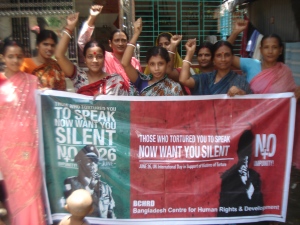
Participants and staff at BCHRD in Bangladesh take part in the human chain and rally in Mophammodpur, uniting agaisnt torture and impunity.
It seems like a long time ago already when hundreds of human rights groups united around the world to campaign for the end of torture.
However it was only last month when thousands of people across the globe voiced their support and solidarity for victims of torture and condemned the practice of torture perpetrated in a variety of contexts.
The main theme for the 26 June campaign was #NoMoreImpunity, a theme replicated across all the IRCT materials for the day – many of which are viewable in the photo blog summarising the highlights of the day.
To read this blog and to view a selection of photos from the day, just click this link.
IRCT Rwandan Genocide commemoration comes to an end
Since April we have been publicising ten hard-hitting, insightful, harrowing stories from female survivors of torture and sexual violence of the Rwandan Genocide in 1994.
Twenty years after the genocide these brave women, and many more throughout Rwandan, are still seeking therapy and justice. But it is thanks to the provision of therapy that many of these women are overcoming their past.
We focused on ten stories over the exact 100 day period of the genocide, each with a different theme and experience. All of the stories are featured in the IRCT’s latest publication of Torture Journal, which you can read in full here.
New Swedish law enshrines important step against impunity
July signalled a positive step towards the global fight against impunity with Sweden adopting a new law which grants them international jurisdiction to try perpetrators of torture, no matter how historic the cases of torture may be.
The law, which is expected to be expanded upon once more in January 2015, was welcomed by the IRCT as a positive step in assuring victims of torture receive justice and redress for their torture.
The IRCT also wishes to congratulate the Swedish Red Cross who were instrumental in assuring this law was possible.
To read the full story click this link.
For further information from World Without Torture, do not forget to ‘like’ us on Facebook and follow us on Twitter. Click here to visit our Facebook page, and here to visit our Twitter feed.
Explained: The rights of torture survivors
Posted by World Without Torture in From our members, Justice, Rehabilitation on 13/03/2014
A new video from the European Center for Constitutional and Human Rights (ECCHR) uses compelling interviews with leading professionals in the anti-torture field not only to explain the rights of torture victims, but to highlight existing barriers to torture rehabilitation.
The video, which features Dr. Mechthild Wenk-Ansohn from BZFO, an IRCT member, and IRCT patron and former UN Special Rapporteur on Torture Manfred Nowak, discusses what rights torture survivors have under the United Nations Convention Against Torture.
“Torture is one of the most serious human rights violations,” says Manfred Nowak in the piece. “Because of this, torture survivors are in need of whatever support and rehabilitation is available to overcome their experience of torture.
“Yet most of the time, rehabilitation is provided by centres in urgent need of money. There needs to be force on to states to provide full rehabilitation.”
The ECCHR is a human rights group which focuses on providing human rights litigation to hold state and non-state actors accountable for the violations of the rights of the most vulnerable.
It is their hope that with video pieces, such as this, more people will understand just how prevalent torture is around the world and what ore needs to be done to stop it.
You can watch the video below.
